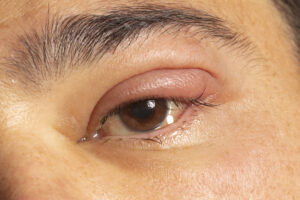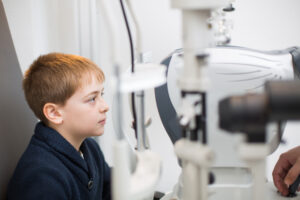Diabetes affecting your eye health
Diabetic retinopathy, macular edema (which typically develops along with diabetic retinopathy), cataracts, and glaucoma are some eye illnesses that can affect people with diabetes. These conditions can potentially cause vision loss.
Symptoms
You might not have any symptoms in the first stages of diabetic retinopathy. As the condition worsens, you run the risk of developing the following:
- Floating blemishes or shadowy lines in your field of vision (floaters)
- Hazy vision
- Inconsistent vision
- Dark or empty spots in your vision
- Vision loss
The following are the most frequent eye disorders that can arise from having diabetes.
Retinopathy caused by diabetes
Diabetic retinopathy occurs when the retina’s blood vessels enlarge, break, and bleed due to the effects of diabetes. High blood sugar levels bring on this disorder. The component of the eye affected is the retina, which sends information from the eye to the brain, and is located at the back of the eye.
While your eye can detect light and images, your brain cannot understand them without the retina. When your retina is damaged, you will notice that your vision is decreasing, regardless of an up-to-date prescription.
Macular edema
Diabetes can lead to an eye disorder known as diabetic macular edema, in which the macula becomes enlarged. The macula is the eye region in charge of transmitting images with the highest possible resolution to the brain (think of it like a high-definition TV screen). The macula is crucial in maintaining clear eyesight, and can be found close to the retina’s center.
In macular edema, blood vessels in the retina expand when they shouldn’t. The plates are also susceptible to tearing, which can cause fluid to flow into the macula. This results in swelling of the macula, which medical professionals refer to as “edema.” As a result, the central area of your vision may become wavy or blurry.
Glaucoma
Glaucoma develops when the optic nerve (the nerve that connects the retina to the brain) is damaged. This is typically brought on by an increase in pressure within the eye. Loss of eyesight is an inevitable consequence of any damage to the optic nerve. If there is sufficient damage, you risk permanently losing your vision. Glaucoma is a condition that can be brought on by diabetes.
Sometimes, high sugar levels can cause the retina’s blood vessels to become so severely damaged that the body needs to start producing new ones. If new blood vessels sprout on the iris (the colored area of your eye), the pressure within your eyeballs will increase. This can result in glaucoma that is challenging to treat.
What problems does diabetic retinopathy cause?
The complications that might arise from diabetic retinopathy include the following:
Diabetic macular edema (DME)
Around 1 in every 15 people may acquire DME. DME is caused when blood vessels in the retina leak fluid into the macula, which is the central section of the retina (a part of the retina needed for sharp, central vision). This results hazy vision.
Neovascular glaucoma
Diabetes can result in abnormal blood vessels growing out of the retina, which can prevent fluid from the eye from draining properly. This condition is known as diabetic retinopathy. This contributes to the development of glaucoma.
Retinal detachment
Since diabetes can cause new blood vessels to grow from the retina into the vitreous (the jelly of the eye), this increases the risk of retinal detachments. The vitreous normally moves freely, but if there are vessels in the vitreous, then when the vitreous moves forward, the vessels can pull the retina along with it, causing a retinal detachment.








